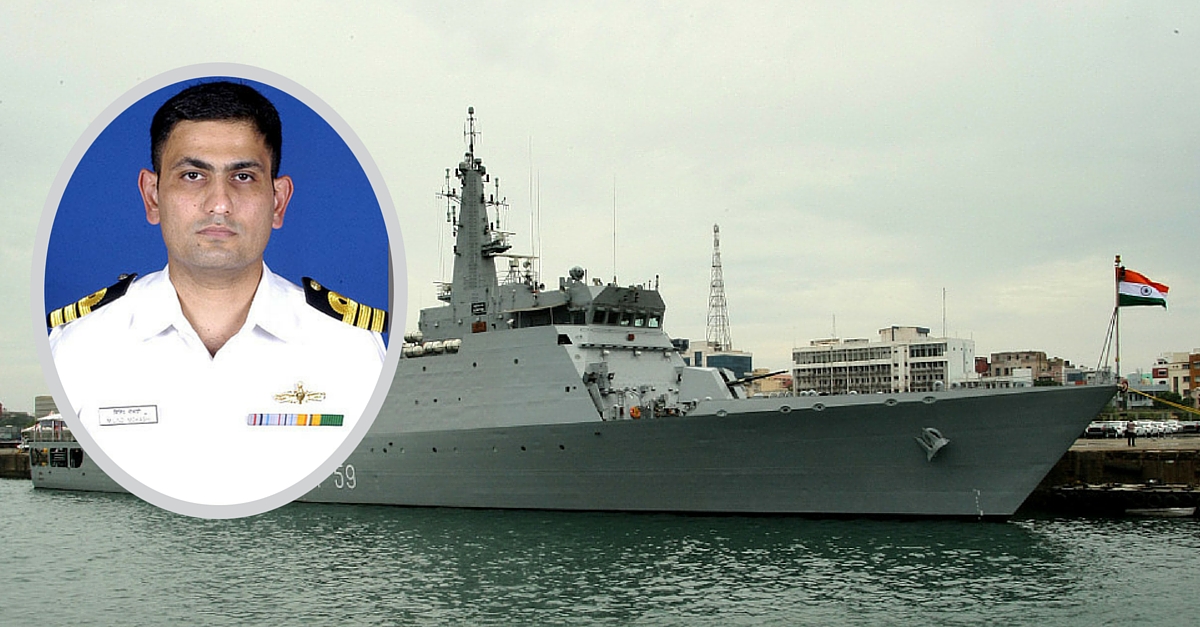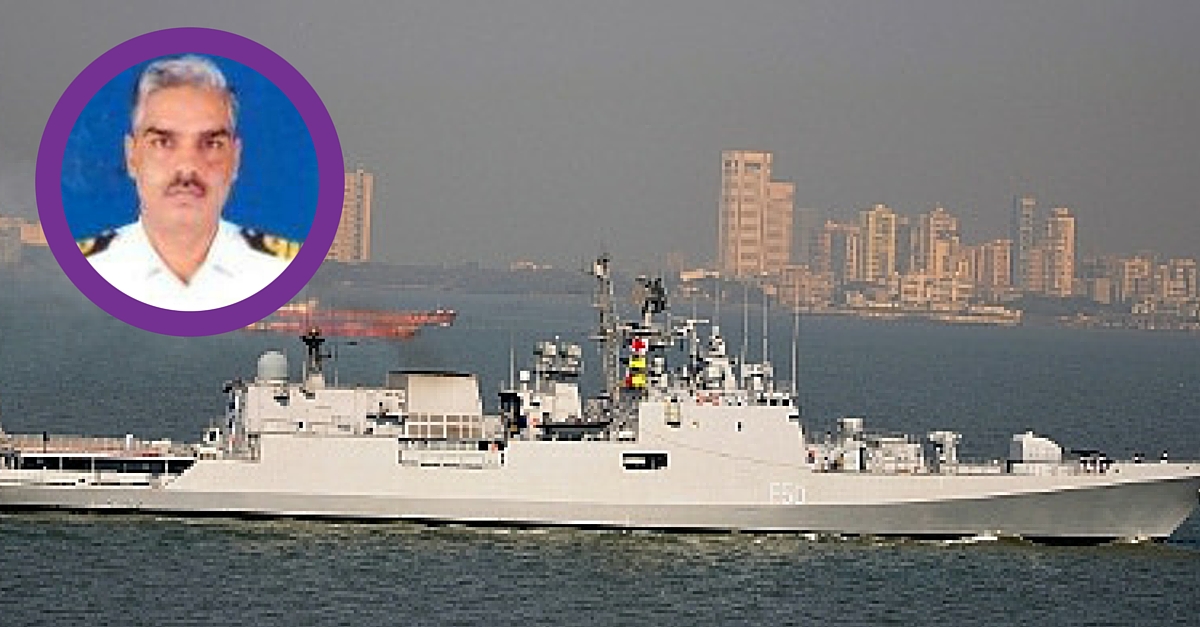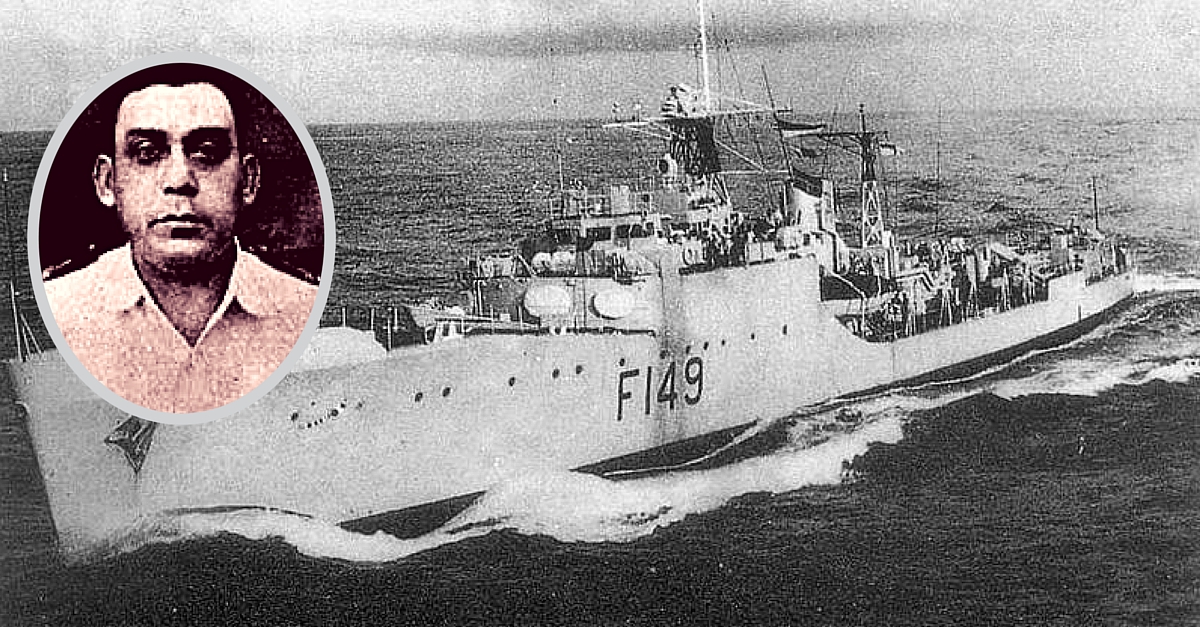10 Daredevil Heroes of the Indian Navy You Should Know About
Indian Navy also known as Bharatiya Nau Sena, is the naval branch of the armed forces. On the occasion of Indian Navy Day we honour the men and women who have served and continue to serve with the navy.

Indian Navy also known as Bharatiya Nau Sena, is the naval branch of the armed forces. On the occasion of Indian Navy Day we honour the men and women who have served and continue to serve with the navy.
For any nation, the navy is as important as the army, sometimes more. With one of the longest coastlines for any country in the world, India has been protected fiercely by its naval heroes throughout history. Here is a list of 10 such acts of incredible bravery:
1. Indian Navy MARCOS

The 26/11 Mumbai attacks were witness to raw courage on the part of eight Indian Navy Marine Commandos (MARCOS), who became the gamechangers in a battle that was being won by a group of terrorists creating havoc in India’s commercial hub. The MARCOS are among the fittest Indian special forces, usually deployed for the safety of oil installations or to counter pirates on the high seas.
One hundred and sixty five persons died in the 26/11 attacks. But for the timely intervention of the Indian Navy Marine Commandos (MARCOS), the toll could have been far higher. It was the single most heroic act on the night of the 26/11 attacks.
2. Cdr Milind Mohan Mokashi

Cdr. Mokashi received the Shaurya Chakra for his outstanding efforts to evacuate thousands of Indian and foreign nationals from war-ravaged Yemen during Operation Rahat in 2015. He was the Commanding Officer of INS Sumitra. Heavily armed Houthi rebels were patrolling the harbour in boats when Mokashi’s ship entered Aden Harbour on the night of March 31. Additionally, there were air strikes by the Saudi-led coalition against the rebels.
The officer immediately deployed armed boats manned by sailors in close proximity of the ship and, braving the heavy firing and shelling, took charge of the situation to ensure the safe embarkation of evacuees amid heavy cross firing.
3. Vice Admiral Krishnan

Vice-Admiral Krishnan, Flag Officer Commanding, Eastern Naval Command, used a highly creative strategy in the 1971 war with Pakistan. Krishnan was concerned about one of India’s greatest and most formidable carriers, INS Vikrant, being threatened by the presence of Pakistan’s destructive Ghazi submarine in the Bay of Bengal. So he decided to deceive the Pakistani Navy into believing that INS Vikrant was in the port of Vizag by getting an ageing destroyer INS Rajput to pretend to be Vikrant by sailing it out of Vizag and generating heavy wireless traffic.
He even tricked his own navy in Chennai by falsely informing them that INS Vikrant would arrive in Vizag and ordering huge rations to indicate that the fleet was in the harbour. The Pakistanis fell for the trap. Ghazi was ordered to change directions and move to Vizag. Within a few days it was hit by an explosion and destroyed. In the meantime, INS Vikrant had been safely stationed in Andaman. Soon after the sinking of Ghazi, Vikrant launched its first air strikes that stunned the Pakistani army in East Pakistan.
4. Captain Pradeep Singh

Captain Pradeep Singh is the recipient of the Nao Sena Medal for Gallantry for his meticulous planning of one of the most daring operations during Operation Rahat in 2015. As the commander of INS Tarkash, his actions led to the safe evacuation of around 600 people of 18 different nationalities from Al Hodeidah and Aden harbours in the face of great hostility and backdrop of violence. He also evacuated 10 nurses who were stuck in heavy crossfiring, as well as the body of the first Indian casualty in the Yemen conflict.
5. Second Officer Kalyani Sen

The Women’s Royal Indian Naval Service was established as part of the The Royal Indian Navy (RIN) during World War II. Although the women did not serve on board the ships, this did give them a role in the navy. The first Indian service woman who visited the UK was second officer Kalyani Sen. Sen went there to make a comparative study of training and administration in the Women’s Royal Naval Service.
“In India there is still a big prejudice against girls and women working with men…but the women are so keen to get into the Services that they are breaking it down,” she said.
6. Captain Rajesh Dhankhar

Captain Rajesh Dhankhar received the Nao Sena Medal for Gallantry for saving hundreds of lives amidst heavy shelling in war-torn Yemen as a part of Ops Rahat. Undeterred by the dangerous security scenario ashore, the officer led his team from the front and fought hard to evacuate stranded personnel even during dark hours. This Commanding Officer of INS Mumbai was responsible for the safe evacuation of 441 Indians and foreign nationals.
7. Commodore Babru Bhan Yadav

Commodore Babru Bhan Yadav led a brilliant missile attack against Pakistan’s port city of Karachi in the 1971 Bangladesh Liberation War. One of the highest decorated officers of the Indian navy, he was the first to be awarded the Maha Vir Chakra in 1972.
Commodore Yadav’s citation reads that he displayed great leadership in the “offensive sweep on the enemy coast off Karachi, deep into the enemy harbour where he encountered two groups of large enemy warships, despite the threat of air, surface and submarine attack.” The mission was code named Operation Trident.
8. Captain Mahendra Nath Mulla

Thirty five years years ago, the INS Khukri went down in the Arabian Sea after being torpedoed by a Pakistani submarine. Eighteen officers and 176 sailors went down with it, including the ship’s captain Mahendra Nath Mulla. He was the first captain of independent India’s navy to go down with his ship.
Maj. General (retd) Ian Cardozo has authored a book about the incident and while speaking at the book launch, he said, “He (Capt. Mulla) was aware that the majority of his officers and men were trapped below deck. Being the man that he was, he knew that it was not right for him to save himself while his sailors went to a watery grave. In those few moments he helped as many as he could, and then went down with his ship. In this brave and heroic action, Captain Mulla teaches us not only how to live, but how to die.”
9. Kunjali Marakkar

Source: Wikipedia
The Kunhali Marakkar or Kunjali Marakkar was the title given to the Muslim naval chief of the Zamorin, the Hindu king of Calicut in present day Kerala during the 16th century. There were four major Kunhalis who played a part in the Zamorin’s naval wars with the Portugese from 1502 to 1600. Of the four Marakkars, Kunjali Marakkar II is the most famous. The Marakkars are credited with organizing the first naval defence of the Indian coast.
10. Rear Admiral Rishi Raj Sood

Source: Wikipedia
Rear Admiral Rishi Raj Sood received the Vir Chakra. His award citation reads:
“During the hostilities with Pakistan in December 1971, Commander Rishi Raj Sood was the commanding officer of one of the Indian naval ships, which participated in operations in the Arabian Sea. His ship formed part of an anti-submarine attack force, which was involved in hunting and killing enemy submarines.
When INS Khukri received multiple torpedo hits from an enemy submarine, Commander Sood rushed his ship into a counter-attack on the enemy submarine. The attack was conducted so fiercely and relentlessly that the enemy submarine could not carry out any further attack and had to make a retreat.”
Like this story? Or have something to share? Write to us: [email protected], or connect with us on Facebook and Twitter (@thebetterindia).
If you found our stories insightful, informative, or even just enjoyable, we invite you to consider making a voluntary payment to support the work we do at The Better India. Your contribution helps us continue producing quality content that educates, inspires, and drives positive change.
Choose one of the payment options below for your contribution-
By paying for the stories you value, you directly contribute to sustaining our efforts focused on making a difference in the world. Together, let’s ensure that impactful stories continue to be told and shared, enriching lives and communities alike.
Thank you for your support. Here are some frequently asked questions you might find helpful to know why you are contributing?


This story made me
-
97
-
121
-
89
-
167











